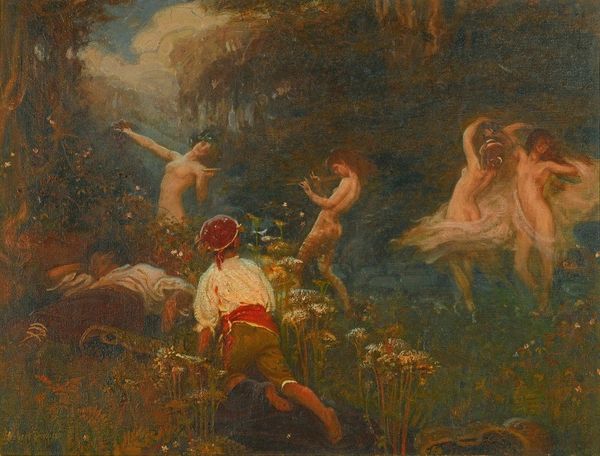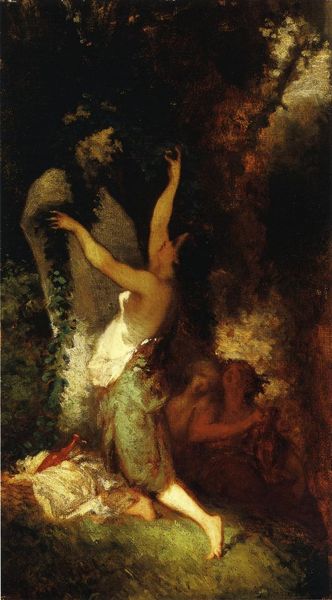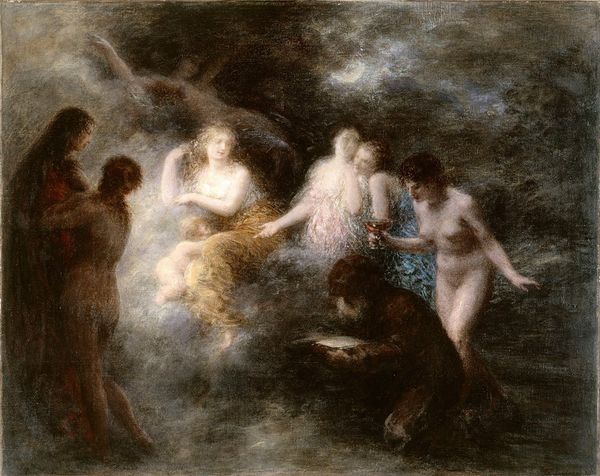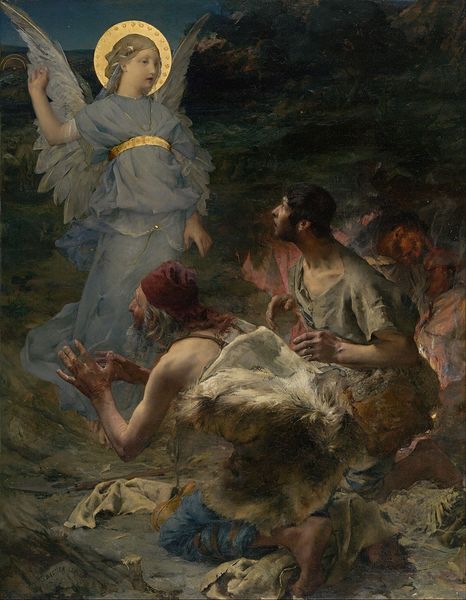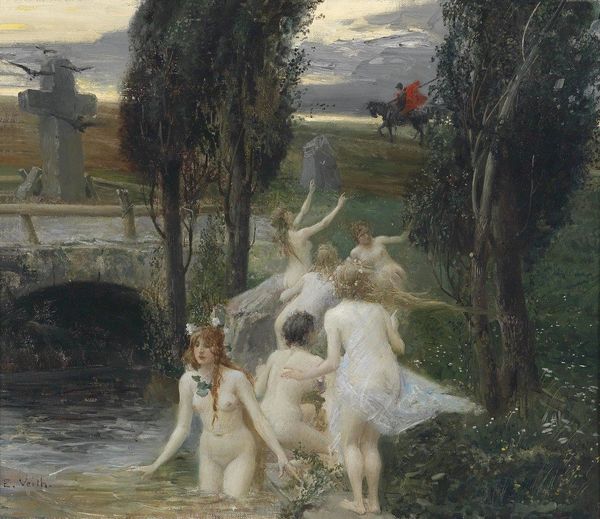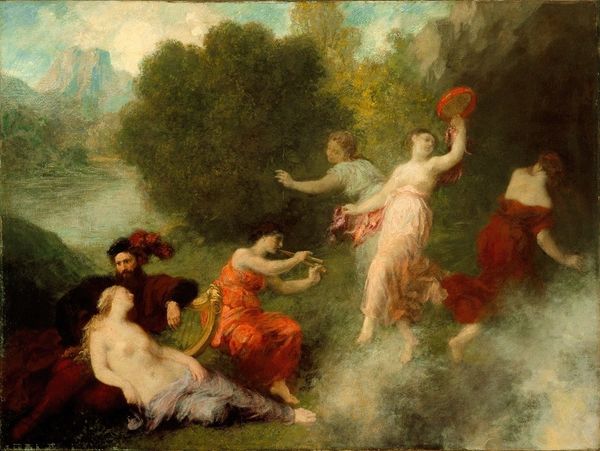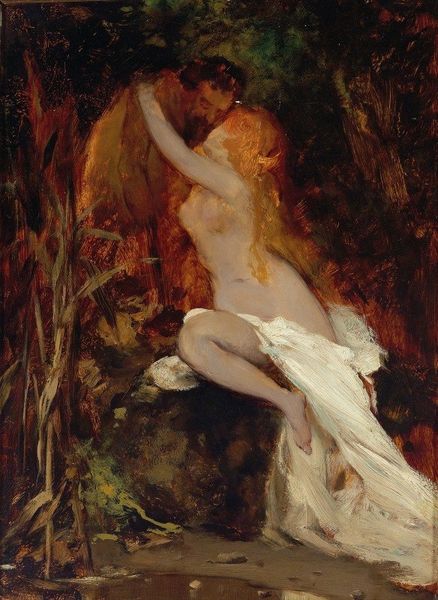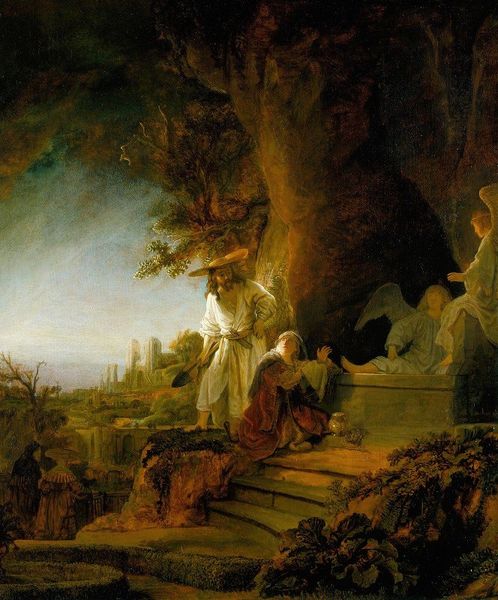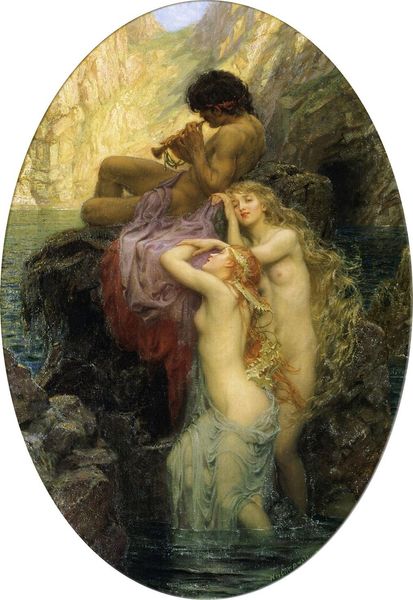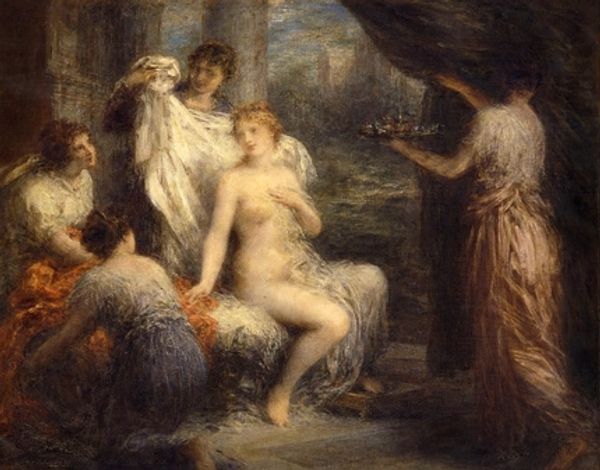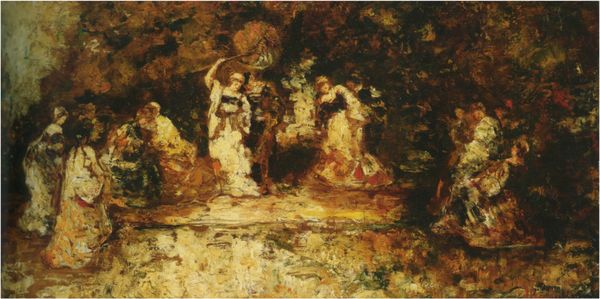
painting, oil-paint
#
gouache
#
fairy-painting
#
painting
#
oil-paint
#
landscape
#
figuration
#
underpainting
#
romanticism
#
painting painterly
#
genre-painting
#
academic-art
#
impressionist inspired
Copyright: Public domain
Curator: Standing before us is "The Vintage Morn" by Herbert James Draper. Editor: The title suggests something bucolic and gentle, but the painting evokes a rather unsettling sensuality. Curator: Yes, Draper often navigated the complex interplay between academic art and more emotionally charged romantic themes. Looking at the scene we can examine how class, gender, and mythology create very problematic issues. Editor: Right. On the surface, we see a youth encountering what appear to be nymphs or dryads in a woodland setting. However, the historical context demands a closer examination. It is about 1890. What is his access, and what will come of it? Curator: These 'fairy paintings' became quite popular, especially within elite Victorian circles, offering a glimpse into escapism but also reinforcing certain gender and class expectations. We might also ask who would be owning such pieces? It would inform on how gender relations, class tensions and sexuality were negotiated in the social arena through artistic preferences. Editor: Certainly. And Draper's mastery of oil paint allows him to render the ethereal figures with a kind of luminous, almost tactile quality. He teases the boundaries between flesh and spirit and, for me, sets alarm bells ringing around idealized representations of women that lack true agency or inner life. Curator: We can also discuss who has the opportunity to sleep like this youth? Is this then an indictment against work ethic and the idle rich? It has the qualities of genre paintings that touch on everyday morality. The painting could be a social critique, albeit subtly veiled in romantic allegory, of that time and who got to "party". Editor: It is a perspective which demands asking where are those wild, abandoned spirits now and do they still reflect ideals? What could a piece like this contribute to contemporary discourses on intersectionality and reclaiming agency in art? Curator: Considering the role such imagery played in defining social norms, it makes sense that, today, the gaze has reversed and the imagery now faces different critical dialogues about privilege and autonomy. Editor: I'm seeing that very differently now. It becomes, as you suggested, an image very worthy of our focused attention.
Comments
No comments
Be the first to comment and join the conversation on the ultimate creative platform.
